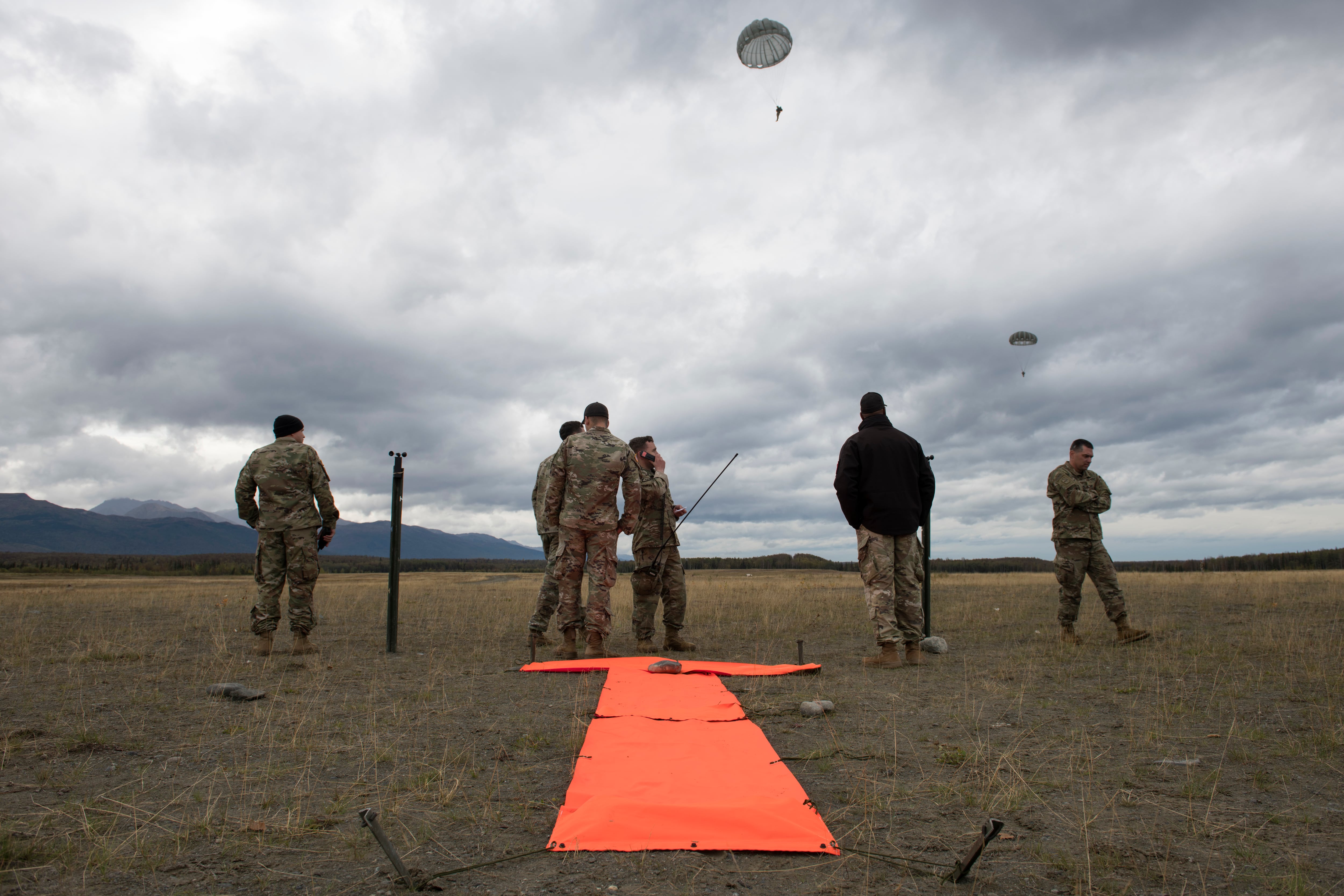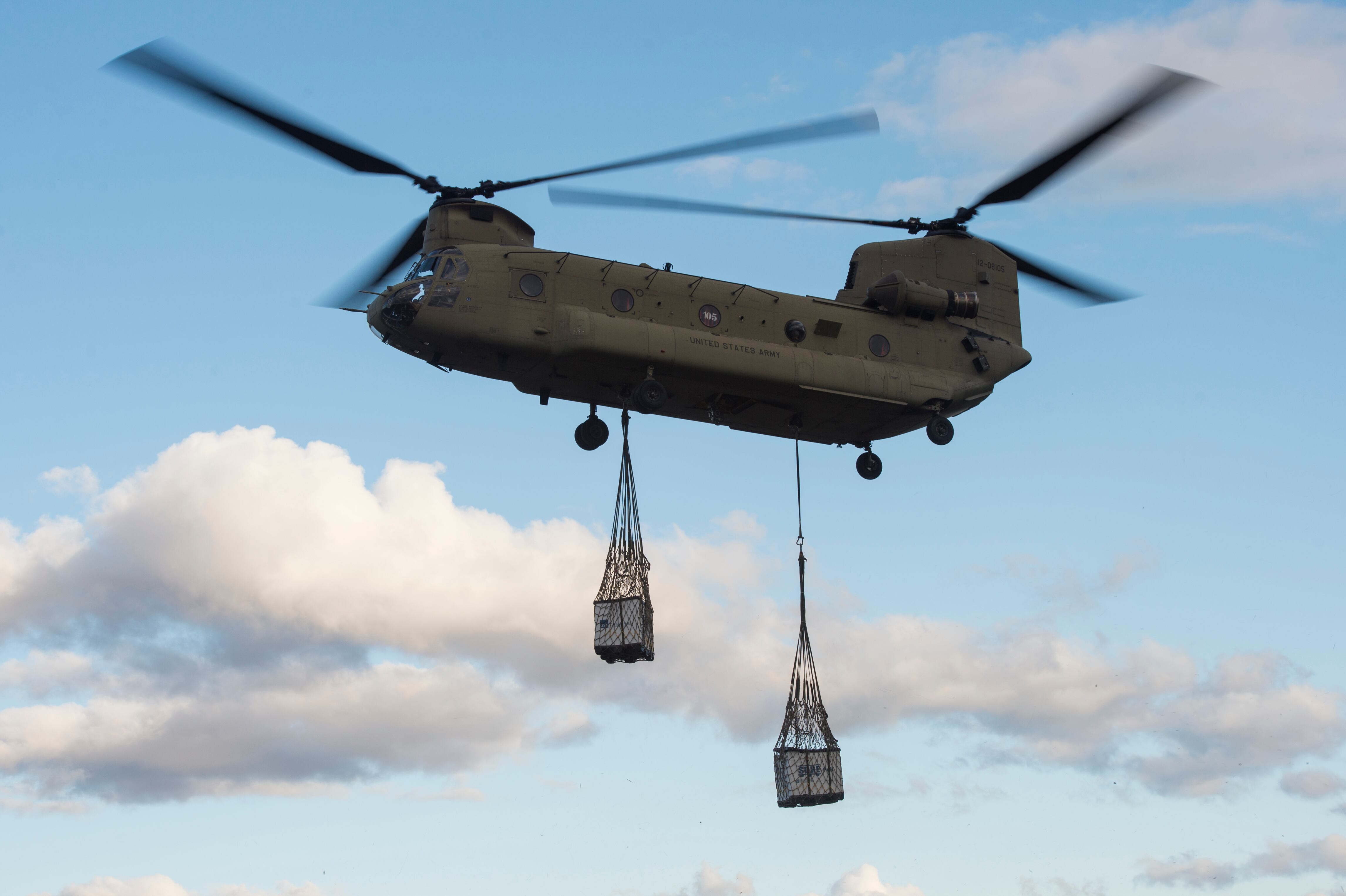The Army may close its historic Pathfinder School, a three-week program that teaches troops to prepare drop zones and landing zones ahead of a larger assault force, according to personnel familiar with the matter.
Army Training and Doctrine Command said a decision has not yet been finalized regarding what to do with the course that takes place at Fort Benning, Georgia, and trains soldiers and sister service personnel to establish parachute drop zones using beacons and visual cues, as well as helicopter sling-load operations.
Several Pathfinder-qualified soldiers warned that eliminating the schoolhouse at Fort Benning would create a capability gap and become a decision the Army regretted in a future conflict.
“No decisions have been made,” said TRADOC spokesman Col. Rich McNorton. “We are relooking at all training, including all functional training, that has been impacted by the COVID-19 pandemic and budget cuts.”
One of the proposals for the Pathfinder School’s future involves running six final classes next fiscal year and then shutting it down, according to a soldier familiar with the ongoing discussions.
All of the Army’s functional training courses are under scrutiny and are being prioritized, McNorton said, stressing that decision-makers are still reviewing recommendations. Before any decision is made, TRADOC officials will solicit input from field commanders and brief senior leaders, he added.
Part of the prioritization is due to the coronavirus pandemic. Bringing soldiers in from around the country and quarantining them for two weeks before starting courses that last about the same timeframe doesn’t make sense to the service. On top of the virus, military leaders expect some fiscal constraints in future budgets.
Some training courses may move online or involve sending mobile teams to teach the material at different Army posts. Other courses may be discontinued altogether.

“Those that we may not have a need for, or that are just nice to have, those are on the lower end that may be cut if we can, or at least suspended,” McNorton said. “Pathfinder would be under those.”
The Pathfinder School already sends instructors on training trips to different installations because the skill is in high demand among airborne units.
“If we were at Fort Bragg, that course would be full every class with just people from the 82nd [Airborne Division],” said a former instructor, who like the others spoke on condition of anonymity because they were not authorized to talk. “They need it so much. ... They were our biggest customer, along with Army Alaska.”
Pathfinders originated during World War II out of a need to mark drop zones and guide aircraft prior to massive parachute jumps, ensuring all soldiers landed in close proximity. Technology has changed, but the Pathfinders Army Times spoke with agreed that the skillset remains relevant.
“You’re going to need guys who have these skillsets to say ‘you can land a helicopter here or you can’t’ and ‘this DZ is suitable or it’s not,‘” said one soldier. “A satellite isn’t going to be able to tell you there’s three feet of mud on the ground. It may not be for the D-Day invasion, but it could be for resupply drops in a degraded environment where they can’t rely on GPS, so they need a Pathfinder on the ground.”
Running a drop zone at Fort Bragg is fairly straightforward. The area’s dimensions, elevation, run-in headings and release points are known, and regularly practiced, by pilots and jumpers.
But preparing assault zones in new terrain — which would be expected in another conflict — requires troops who can navigate through foreign territory, relay coordinates, direct air traffic and remove obstacles with explosives before the main air assault or airborne force is brought in.

Airmen frequently attend Pathfinder training and even teach at the schoolhouse. And the Air Force’s Combat Controller mission is closely linked to that of Army Pathfinders, but the Army’s demands could outpace the Air Force’s supply in the event of a major conflict.
“Air Force Combat Controllers can do it, but they are special operations and not everyone has access to them,” explained one former Pathfinder instructor.
If anything, the training should be modernized more, teaching soldiers how to disguise beacon signals, defeat GPS spoofing and set up landing strips, according to another Pathfinder.
One soldier said that Army officials might have counted the number of Pathfinder-qualified soldiers in the Army and saw that the service has plenty available. That can be misleading, though.
“People go to Pathfinder when they need it, usually as a junior NCO or officer,” the soldier said. “They then get promoted to the senior ranks and no longer sit in those coded positions, yet still have the Additional Skill Identifier.”
It’s difficult to say how many Pathfinders exist across the Army, since the service shuttered its final company officially charged with the mission in 2017. All that remains today are three Pathfinder training programs.
The 101st Airborne Division has its own course under the Sabalauski Air Assault School. But only 101st personnel can attend it, according to the instructors. There is also a National Guard course, but the number of active-duty troops who can go there is limited.
The Fort Benning Pathfinder School has long been the proponent for all Pathfinder training, influencing the field manual for the entire skillset and serving as the primary training team for paratroopers across the force.
Closing the school “would basically shut off all realistic chances for anyone other than the 101st going to Pathfinder School,” said one soldier, a former Pathfinder branch chief. “So that whole skillset would be lost to the majority of the Army.”
Kyle Rempfer was an editor and reporter who has covered combat operations, criminal cases, foreign military assistance and training accidents. Before entering journalism, Kyle served in U.S. Air Force Special Tactics and deployed in 2014 to Paktika Province, Afghanistan, and Baghdad, Iraq.





